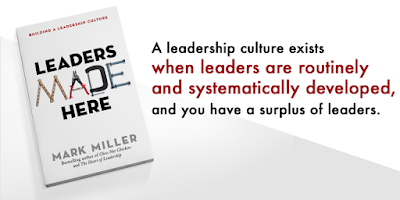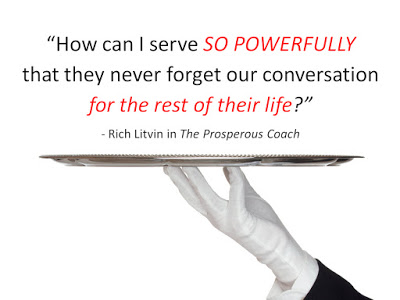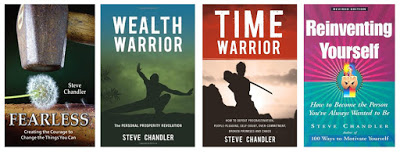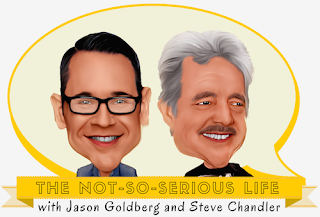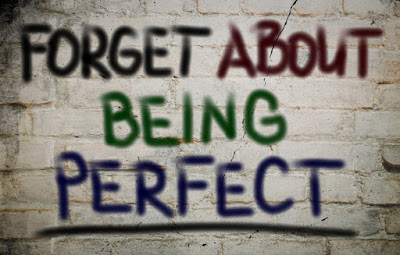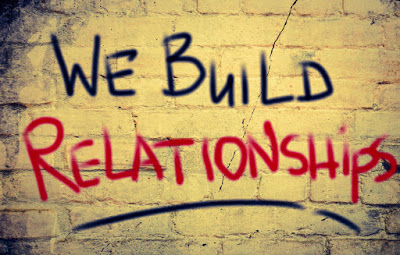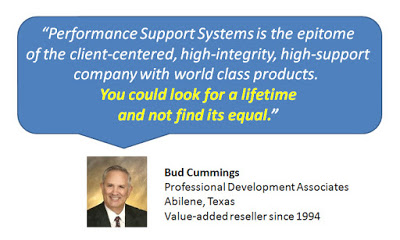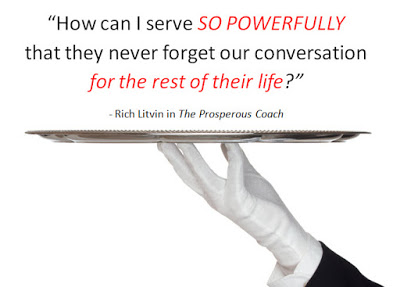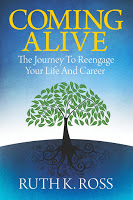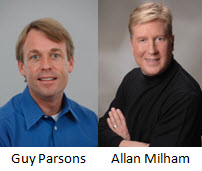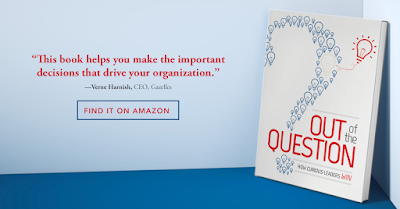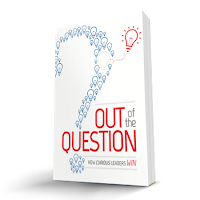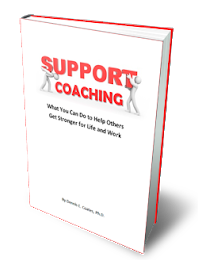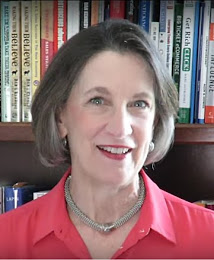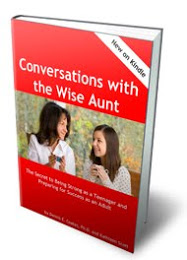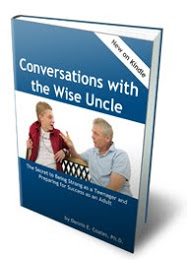Faith-based volunteering continues to be a powerful force in addressing global needs, driven by a deep sense of purpose and compassion. Across countries and cultures, religious communities mobilize people to step outside their comfort zones, often into challenging environments.
Tuesday, December 17, 2025
Tuesday, December 17, 2025
Jett Harris: Why Showing Up for the Homeless is a Far-reaching Act of Care
Every day, people experiencing homelessness navigate a world that often treats them as invisible. While donations and services are important, the consistent presence of people who genuinely care can offer something equally essential: human connection. The act of showing up, listening, and acknowledging someone’s existence may seem small, but it carries a weight that money alone cannot match.
Tuesday, December 14, 2025
The Unchanging Truth: Olivet University Shares How Biblical Values Shape a Flourishing Life
In an ever-evolving world, where trends, technologies, and cultural norms shift with dizzying speed, Olivet University explains that the search for lasting purpose and fulfillment can feel overwhelming. Many people chase success, wealth, or recognition, only to find that these achievements offer fleeting satisfaction. Amid this landscape of uncertainty, one constant remains: the enduring wisdom found in biblical values. These timeless principles not only guide ethical behavior but also serve as a foundation for a flourishing, meaningful life.
Tuesday, March 10, 2023
Faith and Adversity: How Christianity Can Help You Stay Strong
Adversity is an inevitable part of life. It can come in many forms, such as health issues, financial troubles, or relationship problems. During these challenging times, it's easy to feel overwhelmed, lost, and helpless.
However, having a strong faith can provide comfort, hope, and strength to face and overcome any obstacle. We will share how faith, particularly Christianity, can help individuals remain strong during uncertain times.
Tuesday, Dectember 15, 2021
The Origin and Nature of the Church
God's people started with Adam and Eve in the Garden of Eden. He made them in his image, which implies they were made in fellowship with their Creator (Gen 1:27). Despite their rebellion, Jesus did not reject them and instead vowed to send a Redeemer (3:16)
Later, God summons Abraham from a sun-worshipping household and enters into a covenant with him, vowing to be his god to both him and his offspring (Gen. 17:7). God promised to give Abraham a place, to create him a powerful nation, and to bless all peoples through him (12:3). Isaac is born from Abraham, and Jacob is born from Isaac, whose name God changed to Israel and through whom God brought the twelve tribes of his people. The rest of the Old Testament is devoted to God's interactions with Israel's twelve tribes.
Tuesday, March 14, 2017
“We Don’t Need a Leadership Culture”
I'm delighted to feature a guest post from a very special leader and author, Mark Miller.
Leadership is the cornerstone of all great organizations.
Yes, before you think it, I do understand more is required than outstanding leadership to build an enduring organization. After a five-year research effort, our team found High Performance Organizations actually have four things in common. They all Bet on Leadership, Act as One, Win the Heart and Excel at Execution. I wrote about these “moves” in my previous book, Chess Not Checkers.
However, the journey to high performance always begins with leadership. That’s why I am so excited about my new book, Leaders Made Here. Today, too many organizations face an inadequate supply of leaders. The question they are grappling with is…
How do you ensure you’ll have the needed leaders to fuel your future success?
The answer, in short: build a leadership culture.
Let’s be clear on terms from the beginning. A leadership culture exists when leaders are routinely and systematically developed, and you have a surplus of leaders ready for the next opportunity or challenge.
What would happen if organizations were proactive and strategic and built their own leadership pipeline and filled their bench with capable, ready-now leaders? What if companies and non-profits created a culture in which exceptional leadership at all levels was the norm?
Even as I write this, I am well aware of the resistance to this idea of building a leadership culture. There are many objections. Today, we’ll take a quick look at the first.
“We don’t need a leadership culture; we’re doing fine.”
You may be right; you are doing fine – for now. However, even in organizations currently enjoying success, this is often due to the efforts of a few good women and men who shoulder the burden for their entire organization. Their heroic acts are required again and again to win the day. Not only does this approach fail to leverage the full capacity of your people, sustained greatness is unlikely.
Ultimately, your future success depends on the quantity and quality of leaders on your team. Leaders Made Here provides a path to position your organization among the elite. You can create a place where leadership excellence is not a dream but rather a by-product of a sound strategy executed with diligence.
About the Author
Mark Miller is the best-selling author of 6 books, an in-demand speaker and the Vice President of High-Performance Leadership at Chick-fil-A. His latest book, Leaders Made Here, describes how to nurture leaders throughout the organization, from the front lines to the executive ranks and outlines a clear and replicable approach to creating the leadership bench every organization needs.
(This article was originally published at www.greatleadersserve.com.)
Thursday, March 9, 2017
What New Leaders and THEIR Bosses Need to Know
That’s just one of the startling statistics in William A. (Bill) Gentry’s excellent book: Be the Boss Everyone Wants to Work For: A Guide for New Leaders.
I clearly remember the first time I was put in a position to supervise other people.
The problem, which I didn’t appreciate at all at the time, was that I did not have a clue about what the role entailed. There was assumption that I would know what to do just because I was put in that position.
The reality: I didn’t know what I didn’t know, and I made a lot of mistakes.
I could have accelerated my learning curve and avoided several issues if I’d had Bill Gentry’s book as my guide.
Here’s why…
Dr. Gentry writes from a unique perspective. In his role as a research scientist at the prestigious Center for Creative Leadership for many years, he had access to – and freely shares in the book – data on what effective leaders do and don’t do.
During his tenure there, he got promoted from individual contributor to Director, so he experienced first-hand the high’s and low’s of making the shift. His personal stories throughout are enlightening as well as poignant, and I appreciated his willingness to be vulnerable.
In fact, he could have been describing me when he wrote that he got feedback about how…
…“serious” and at times, “intimidating” he was when someone approached him.
…“focused, really busy and unapproachable” he appeared if a direct report came into his office unexpectedly.
Many years ago, I received almost identical comments from some of my team members in one of my 360 feedback reports.
I relate to authors who position themselves as guides or companions on the journey, not an expert who has all the answers. Dr. Gentry exemplifies this role of guide as he masterfully combines his own experiences with established research.
The overall message is that a new leader must "flip the script.”
What worked as an individual contributor – such as a concentration on “me” and my own results – will not serve you well when you take on a team where “we” and achieving outcomes together must be the focus.
“As a leader, you represent, symbolize and personify the organization to your direct reports. So those who report to you attribute how well the organization supports them based on how well YOU support them.” – Bill Gentry
This book should be required reading for high potentials who’ve been identified for future leadership positions, so they know what types of adjustments they’ll need to make when transitioning from individual contributor to boss.
It’s also essential for new leaders and those who supervise new leaders, so there’s a common understanding of the changes required to be an outstanding supervisor or manager on Day 1.
“The people you lead want to know that someone—you, in particular—prioritizes their development and growth. So, make learning and development a priority for the people you lead and serve.” – Bill Gentry
Thursday, January 19, 2017
Are You Unforgettable?
You can have a positive, enduring impact on another human being today. And it’s simpler than you may think.
A few years ago, I was offered a complimentary 2-hour coaching session by my good friend, Jason Goldberg (aka JG). I prepared – as he’d encouraged me to – by writing down areas where I felt I might have blind spots or self-imposed limitations.
That day, July 8, 2015, is a day I’ll never forget.
Because of the insights I gained in that one conversation, I experienced a profound shift in my attitudes and beliefs about myself and my world. I have not been the same since.
JG is truly an unforgettable figure in my life. Even if we were to never have another conversation (which is certainly not the case), I’d carry him in my mind and heart accompanied by a deep sense of gratitude.
So what exactly did he do in our phone call to have that kind of enduring influence?
These two stand out:
1. He was fully present and listened powerfully.
JG was there just for me. He had no distractions or pre-conceived ideas about what I would say or what the solutions might be.
What was most meaningful for me – and allowed me to become vulnerable and open to his coaching – was the genuine curiosity and caring that he brought to the conversation. There was no judgment or criticism.
2 – He asked questions and made observations that no one had brought up to me before.
JG had the courage to suggest an underlying theme that was present in all the concerns I brought up – that perhaps my biggest issue was taking things too seriously. Perhaps I might consider taking a more playful approach to these situations.
At first I resisted.
I’m sure that’s because I am a serious person at heart, and therefore my belief was…that’s the way I’m supposed to be.
After all, these were serious topics we were discussing!
As I started pondering his words, I realized that he was absolutely right.
My tendency was to adopt a grave, somber frame of mind as I thought about these situations as PROBLEMS. That mindset often led to negative emotions like worry and self-doubt.
If I could adopt a more light-heartened attitude and view it all as a GAME or OPPORTUNITY that I might actually have FUN with, I could stay relaxed and calm, leading to clearer thinking and better decisions.
At the end of our call, I had a new nickname that JG has used ever since when he addresses me in emails or messages on social media: Playful Meredith or just PM.
It reminds me of who I aspire to be, even if I’m not feeling very playful at a given moment. I have a choice to adopt that way of being whenever I sense that I’m taking a specific situation too seriously.
The Take-Away for YOU
You don’t have to be a professional coach in order to have a lasting impact on another person.
If you simply repeat to yourself the quote in the image above – and then keep it in mind before each conversation you have – you’ll discover what it feels like to truly be of service to someone else.
The beauty of this approach is that you can relax and have fun because you’re not trying to impress the other person. Your focus is simply to SERVE them, and that means you focus on learning about them. You stay curious and engaged, giving them your undivided attention.
That in itself is a gift these days, with so many people getting easily distracted by other items in their view.
I find it’s a fantastic approach to take with new connections on LinkedIn. When we have our initial conversation, I ask questions, listen and say very little about myself or my products. Instead, when I speak, it’s to offer ideas or resources that might be helpful to them, based on what I’ve learned.
This is an amazing way to build trust quickly because so few people operate this way. Most only listen long enough to get their turn to talk – or they dominate the conversation and have no awareness that they’ve excluded the other person.
What would happen if you ask yourself each morning:
What in your world – and inside yourself – would be different if you carried that question in your head every day for the next 30 days?
Tuesday, December 20, 2016
Virtual Coffee – A Power Tool for Connecting
What if you had a way to give free positive publicity to one of your key connections or influencers? Would you do it?
Recently I joined the community of More Clients More Fun to learn more ways to leverage the power of LinkedIn to build strong relationships.
I was intrigued with one of the strategies suggested by the program’s creators, Ana Melikian, Paul McManus and JoAnne Henein.
What’s the idea?
Set up a “Virtual Coffee” video call with the person online and record the conversation. You conduct the interview and focus the spotlight on the other person.
Who could you interview?
- Current clients who know you well
And what kinds of questions could you ask during such a conversation?
A few suggestions…
What is your business/practice/role in your company all about?
Your background is X. How did you transition from that into what you’re doing today?
What is the WHY behind what you do?
Who do you serve? Who are your ideal clients?
What changes/improvements are you seeing as a result of the work you’re doing?
What’s the most rewarding part of your job/work?
What is your favorite quote and why?
How can people reach you?
The beauty of this kind of interview is that you’re truly being of service to another person. You’re providing THEM with a platform to get positive exposure without having to promote themselves.
Lisa Wozniak is an active member of the More Clients More Fun, and I sent her a connection request after seeing her on one of their recent webinars. At the end of a lively initial phone conversation, she graciously invited me to have a Virtual Coffee with her.
Lisa sent me several of the questions listed above, and I gave thought to my answers prior to our next call, which she recorded on Zoom.
What a blast!
The result is an 18-minute video that I believe will energize and inspire you. Here’s our Virtual Coffee!
If this idea appeals to you, commit to implementing it. Make a list of a few people you’d like to interview and invite the first one.
Who knows what doors will open to other opportunities when you focus on highlighting the good work that others are doing in the world?If you’d like to know more about More Clients More Fun, I encourage you to check out their website and sign up for their free webinar, “10-Point Checklist to Enroll More Clients Using LinkedIn.” You’ll discover several ways you can update your profile to speak to your ideal clients.
Tuesday, August 16, 2016
A Refreshing Take on Addiction and Recovery
Steve Chandler’s Death Wish: The Path through Addiction to a Glorious Life is a must-read for anyone who has an addiction or cares about someone who does.
What’s most significant about this book is the way Steve invites you to THINK about addiction.
You won’t find advice or how-to steps.
No research data or footnotes.
Just a fellow human being sharing his own journey through masterful writing and story-telling. A skilled coach and guide who shows how you can evolve and even THRIVE in life.
I’ve read 10 other Steve Chandler books, and in each one I’ve been impressed by the way he’s guided me to change the way I think about – and then change my behavior around – a specific topic.
Whether it’s fear/courage (Fearless) or money (Wealth Warrior) or time management (Time Warrior) or personality (Reinventing Yourself), I’ve discovered insights about my beliefs and feelings that are rooted in the thoughts I’ve repeated to myself over time.
And it’s not because he uses convoluted language that requires time to decipher. Just the opposite. His writing is engaging and deceptively simple, sprinkled generously with personal stories that touch my heart, mind and spirit.
I love Steve’s creative revision to the serenity prayer because the word “acceptance” conjured up a defeated, fatalistic feeling for him (changes in bold):
"God, grant me the serenity to explore (and enjoy) the things I cannot change. The courage to change the things I can, and the wisdom to love the difference."
This subject of addiction is serious stuff. Yet Steve skillfully injects humor to remind us about the value of bringing a sense of lightheartedness and fun to any situation because “heavy thoughts don’t solve problems.”
You don’t have to be addicted to a substance like drugs or alcohol to benefit from this book. If you’re preoccupied with any behaviors that reduce the quality of your life – e.g., food, gambling or even trying to please others – you’ll find ideas that can lead to a more peaceful, happy life.
“The problem in life starts when you think you have to add something to the present moment to make it better.” – Steve Chandler
Thursday, July 28, 2016
Astonish People with Radical Generosity
I’ve known for a long time how important it is to express appreciation to those who’ve impacted my life in a positive way – especially through hand-written notes and thoughtful gifts.
But in his outstanding book, Giftology, author John Ruhlin introduced me to several ideas that I’d never considered before.
These are life-changing concepts, not just in the TYPES of gifts I choose to give in the future but in the way I THINK about gift-giving.
Just one example: Think in terms of “RADICAL generosity.”
Ask yourself, “What’s the MOST I can do?” instead of “What’s the LEAST I can get away with?” John doesn’t advocate breaking the bank, especially if you’re on a shoestring budget. But he does encourage you to always ask:
I started reflecting on gifts that I had received over the years that impressed and touched me…
One of our resellers who sent each person in my company a huge box of gift wrap, bows and ribbons for holidays, birthdays and other special occasions. It was truly a memorable gift that lasted for YEARS, so we thought of this person often.
Two of my favorite coaches, Steve Chandler and Jason Goldberg sent books and CDs to everyone who subscribed to their free Web TV show, The Not-So-Serious-Life.
Steve Chandler is also one of my favorite authors. I’ve reviewed many of his books on Amazon and promoted them in my social media accounts. In appreciation, his publisher Maurice Bassett has sent me complimentary copies of newly-published books, sometimes multiple copies!
By far, the most astonishing gift I’ve ever received was from leadership expert Marshall Goldsmith.
In 2009 I created a video using PowerPoint and voiceover that illustrated how our product, 20/20 Insight, accomplished several of the recommendations in Marshall’s book, What Got You’re here Won’t Get You There. I emailed Marshall to let him know what I’d done and 10 minutes later he called me.
But that was not the big surprise.
He was so appreciative that I had done that, he offered to send me 100 copies of his book AND to personally address and autograph them if I sent the first names of the recipients. It was an astounding offer and one that many of our clients and resellers appreciate to this day.
In case you’d like to watch the video that sparked his phone call to me, I’ve included it here.
John Ruhlin’s ideas go beyond amazing your clients and customers.
John provides each member of his team with a remarkable gift – paying to having their homes cleaned every two weeks. They LOVE this benefit. It’s something they wouldn’t do for themselves, and the payoff for them and their families is less stress, with more quality time together doing activities they enjoy.
If you’re committed to building strong relationships that lead to referrals and raving fans, grab a copy of Giftology, devour John’s powerful message, then implement his ideas with the most important people in your life.
Thursday, May 26, 2016
How I Recently Overcame the Need for Perfection
When I heard about this idea, I thought it would be fairly straightforward. Boy, was I wrong!
I wholeheartedly agreed with his recommendation but kept putting it off. I had all kinds of excuses…It would be a hassle to set up the lighting, microphone and camera…I wasn’t sure what kind of message would resonate with my current and potential connections…I was concerned about how I’d come across.
All that thinking boils down to fear that the video (and therefore, I) would fall short of the ideal. Of course, this “ideal” was something that I had conjured up in my head and did not exist in reality.
My procrastination was a form of PERFECTIONISM.
For me perfectionism means having ridiculously high standards and being afraid to take action due to a fear of failure or criticism from others.
I realized that I was holding myself to standards that I would never think to impose on anyone else.
I finally took the plunge and made the commitment to get the video done immediately.
I like planning and structure, so I drafted a script that would serve as my guide. Unfortunately, I did not USE it as a guide. I actually tried to memorize the whole thing and practiced it numerous times to get the words and tone right. Not a good idea!
Day 1 - CHALLENGES
I enlisted my husband Lee to set up the lighting and use his camera to record the video. He is a mechanical genius, so that was smart teamwork.
When I did earlier headshot videos a few years ago, I recorded them by myself. I didn’t anticipate how self-conscious I’d feel with Lee standing behind the camera. I got distracted by thoughts of him evaluating me as I spoke (totally unfounded since I know how much he loves me) and forgot what I wanted to say next, so I had to stop and restart several times.
Another reason I stumbled over my lines was due to trying to recall and repeat the script verbatim instead of speaking from the heart.
Then we ran into technical challenges with the camera. No problem. Lee has a second one. Ha! We had issues with that one, too. That meant stopping so he could investigate the problems.
By the time he was ready, we were both mentally tired and decided to postpone the shoot until the next day.
Day 2 – SUCCESS!
The next morning I got up early so I could process the events of the previous day and figure out how to ensure a smooth recording this time.
Thinking and reflecting worked.
I had 3 insights that gave me just what I needed.
1. I realized I was taking this project WAY too seriously!
That was a huge ah-ha. When we’re in the middle of something we’ve deemed important, we tend to take ourselves very seriously – and expect the same from others.
I committed to having FUN so I could enjoy the preparation and recording process.
Big thanks to Jason Goldberg and Steve Chandler for their inspiration to take a more playful approach to everything in life with their writings and The-Not-So-Serious Life Web TV show!
2. I took a few minutes to visualize myself being relaxed and confident in my delivery.
I knew what I wanted to communicate. I just needed to calm down and remember that I was connecting with one person at a time, just like in a 1-1 conversation.
3. I gave up memorizing the script and simply outlined the key points I wanted to make.
This approach allowed me to focus on the natural flow of my words and allowed me to speak more smoothly.
I’m happy to report that I was able to record the video in the FIRST take that morning.
It’s now in my Summary section, and I’ve included it below in case you’d like to see how it turned out (3:19 minutes).
Leave a comment and let me know if you’ve ever had a project that you took too seriously and what you did to get past your fears to complete it.
Thursday, May 5, 2016
3 Ways to Keep Clients for DECADES
What if you delivered such profound service to your clients that one of them said something like this?
We’re not perfect, of course. Even though I have emails, cards and messages from other clients who’ve worked with us for 20+ years, we don’t get it right 100% of the time.
But there are a few things we’ve done very well.
At the core…These actions are more about your way of BEING with people, not implementing a set of tactics. The common theme is SERVICE.
1. Make your initial conversations about the other person.
Whether it’s a phone call, Skype call or in-person meeting, prepare by asking yourself this question:
There won’t be any pressure on you to perform a certain way…or on the other person to buy something.
The purpose is NOT: How can I make a positive IMPRESSION?
Instead, it’s:
After that initial conversation, find reasons to stay in touch and continue serving them. As one of my favorite authors, Steve Chandler likes to say, look for ways to ASTONISH them.
- Recommend a book or podcast that helps them solve a problem.
- Introduce them to someone who can help them reach their goals.
- Send unexpected gifts or hand-written notes and cards.
Take this approach and you will stand out. You’ll be memorable.
2. After they buy, make them feel valued – THANK and ASK.
Even though this happened several years ago, I’ll never forget the day I decided to invest in Ari Galper’s Unlock the Game sales course. Within 10 minutes of my clicking the Buy button on his website, my phone rang. It was Ari, calling to thank me for purchasing his course and assure me that I’d made a wise investment.
I’ve followed Ari’s model with our own clients, with great results. When people buy software, they’re often concerned that they’ll have challenges learning to use the product or will have trouble reaching a knowledgeable, responsive person when they need technical support.
Right after someone orders our software, I call and thank them for choosing us. And I promise them that we’re here to make sure they have a FANTASTIC experience using our program and working with us. That sets a positive tone right from the start.
As they use your product or service, be sure to ASK for their feedback and ideas – in a phone call or survey - to find out how you’re doing and get the information you need to make positive changes.
Here are 3 simple questions:
- What do you like best about doing business with us?
- What do you NOT like about doing business with us?
- What ONE THING could we do differently that would improve your experience with us?
You’ll be amazed what you learn that can help you deliver better service to all your clients.
3. Be clear about your core values, and live them.
Your values are the principles or beliefs that drive everything.
Ask yourself.
What do we stand for?
What guides our decisions and behavior?
What do we want to be known for?
An even more powerful question that goes to the heart of relationship-building:
Here are some of the principles that have guided our decisions and our actions for more than 30 years. These are also words our clients use when they send us unsolicited feedback.
Trust – Tell the truth about what is/is not possible with our software.
Integrity – Do what we say we’ll do and we follow through on commitments.
Fairness – Make decisions with the long-term view in mind, looking at what’s best for all involved. If in doubt, err on the side of making the client delighted with the outcome.
Responsive – Respond to phone calls and emails promptly. Resolve issues quickly.
Responsible – Readily acknowledge when we make mistakes, apologize and do everything we can to make it right. No excuses.
Flexible – Make exceptions or try something new to meet the needs of a specific client. We’re not bound by rigid rules or a bureaucracy.
Think of the clarity you’ll have when you create your own list of the values you want everyone in your company to adopt and live by.
Want more ideas?
Listen to this replay of my interview with Denise Griffitts on her radio show, “Your Partner In Success,” where she and I had discussed this same topic for a full hour!
Sunday, April 17, 2016
Are You Disengaged at Work? Ruth Ross Has Answers
Her message is so valuable to executives, managers and employees alike that I wish all three groups would be required to read it and discuss how they’ll implement the ideas presented.
In 2011 Ruth left the corporate world to devote all her energies into being an “Engagement Evangelist” - speaking to organizations about the ideas presented in Coming Alive.
I wish I’d had this book in my years as an employee, when I experienced disengagement but didn’t realize what it was or how to work through the negative thoughts and feelings I experienced.
And I sure could have used it in my early days of managing other people. I did some things right, but I’d have been much more effective as a leader if I’d understood and implemented the kinds of actions Ruth recommends for keeping people committed and excited about their work.
What I value most about Ruth’s approach to engagement is its clarity and the ease with which anyone could start implementing her ideas, no matter what their position. First, she paints a clear picture of the distinctions between being engaged and disengaged – what each looks and feels like.
Readers can readily identify where they fall on the continuum by taking the Invisibility Index Tool included in the book (one for managers to assess engagement level of employees and the other for a person to self-assess).
She devotes separate chapters for managers and employees to identify steps they can take to re-engage. Her 5-step ALIVE Treatment Plan is brilliant in its simplicity. It resonated with me because I’m a firm believer in the importance of communication between leaders and those they serve.
Her chapter for employees also details specific actions they can take to re-engage at work AND at home. Throughout, her stories and examples of real people and companies bring to life the concepts and inspired me to ask, “How I can do THAT in my own company (or my own life)?”
If you’re experiencing disengagement on the job or know someone who is, I highly recommend getting this book, studying it, and applying the ideas. If you’re in a leadership position, buy a copy for yourself and everyone on your team. It could change your world.
Wednesday, January 27, 2016
The Art of Asking Questions
We all know that communication is made up of the words we use, our tonality, and our body language. A big part of asking artful questions is to consider what is beyond the words.
Tonality
As the saying goes, “It isn’t what you say, but how you say it.” This difference can make or break a conversation. The tone you want to strike is one that makes your audience feel you’re coming at the conversation from the same side of the desk. It’s a we orientation versus a me and a you. It’s a solution-based system versus a problem-based process. It’s inviting and non-threatening. People, particularly millennials, are listening for the invitation to be a part of the conversation. When you’re stressed, the right words might come out, but the invitation should be, for example, “What do you think we can do to get from here to there?” You should avoid, “What are you young to do to get this done?”
Inflection
Years ago, Allan worked for TMI North American, an international consulting firm focused on creating compelling service cultures. One of the examples in their service program described how a shift of inflection or an emphasis on one word in a sentence can totally change the context. Often, the quality of the inflection in our tone of voice has a significant impact on the listener.
Body Language
What your body is saying may or may not be in line with your words. Staying calm and keeping eye contact will help you invite people into the conversation. Otherwise, people sense a disconnection. This is elementary to the human condition. When someone looks at you the wrong way, you think, “Gosh, what did I do?”
Obviously, fists on tables indicate declarations even if there are questions being asked. But turned-up and outstretched palms – either one or both – invite people into the discussion. An arm waved in a soft, open arc indicates, “I’m with you and we’re exploring.” Arms that are held in, or even worse, folded, indicate the speaker is closed. Some people are born frowners; others are natural smilers. We all need to take responsibility for how we posture when we’re in this kind of situation.
Context
The context is about what’s happening right here and now; it’s also about putting yourself in other people’s shoes and understanding how they’re affecting by what’s happening. You can ask a question, and it will mean one thing in an environment where things are going well, and something else entirely if things have gone poorly. This difference has to do with your audience’s frame of mind. Are your listeners in a positive mode or a worried mode? Obviously, asking, “How are things going?’ to a group of people who just experienced a 20% layoff is quite different from presenting the same question to a group who just exceeded its sales goals for the quarter.
This arena is where empathy, trust, and intent become important. If a leader can be empathetic, that will come across positively. On the other hand, if the person you’re talking to doesn’t trust you, it’s very hard to get the conversation going in the right direction. Many professional coaches suggest starting off a conversation by assuming positive intent. If you come in with positive intentions, the conversation will move ahead very differently and much more rapidly than if you assume negative intent.
Do you naturally assume positive or negative intent when you approach a situation?
Allan Milham’s work as a professional leadership and performance coach over the past 16 years has centered on using powerful questions. For Guy, 20+ years of delights and frustrations consulting with firms attempting to make operational and cultural transformations sparked an evolution in his relationship with his professional coach, Allan, and was the inspiration for Out of the Question: How Curious Leaders Win. Their book has sparked a new mindset and a practical approach to thriving in the competitive and evolving landscape that today’s leaders face.
Monday, January 25, 2016
Two Things the Most Effective Leaders Do
I have.
But unfortunately, there are very few leaders who have this kind of impact. Most are eager to dispense advice and offer solutions instead of ask questions that cause others to think through a problem and come up with their own answer.
In their outstanding book, Out of the Question, authors Guy Parsons and Allan Milham make the distinction between KNOWER leaders and LEARNER leaders.
I love those terms because they accurately describe two very different styles of leadership.
Leaders who come from a Knower position feel the need to have all the answers and be perceived as the expert. Their egos are front and center because they’re concerned about being right. As a result, they’re often closed to new ideas and feel threatened by alternative explanations or solutions.
In contrast, Learner leaders don’t pretend to have all the answers. They recognize that others have important insights and experiences to contribute, so these leaders ask questions from a place of humility that encourage openness and sharing. They have genuine curiosity and are eager to solicit input that builds a solution much greater than just one person’s thinking.
This seems like common sense, but if you were to follow around managers in a lot of workplaces, you’re likely to observe a lot more controlled, closed discussions than those that invite opinions and ideas.
QUESTIONS are the first key!
Questions can encourage others to participate or shut them down.
Questions can build engagement, commitment and momentum or deflate the most enthusiastic employee.
And it’s not just the words you say, it’s how you say them that elicits a positive or negative reaction from those you’re interacting with.
Whether you’re at work or at home, the questions you ask as a LEARNER communicate to others that you really want to hear what they have to say. The positive result is that they feel valued and appreciated. They’re more likely to feel safe in being honest, especially when they disagree with you or want to express concerns.
PAUSING is the second key!
After someone approaches you…or after they’ve responded to a question…don’t be in a hurry to jump in. Be comfortable with giving them time and space to THINK.
They may need to process information they’ve just heard. And not everyone is quick to articulate their ideas. Their brains may be busy evaluating alternatives and pondering consequences.
Also, apply the PAUSE to your own response to a situation. Reacting instantly does not always lead to a positive result. Thinking about how you can create instead of react leads to a better, more thoughtful response.
Observe people interacting, and you’ll see that most people seem to have a low tolerance for silence. If there’s a slight pause in the conversation, they jump in to fill the space. And yet, these silences can be powerful for both parties.
If you’re interested in taking your leadership skills to a higher level, read this thought-provoking book and commit to being a LEARNER leader who makes excellent use of QUESTIONS and PAUSES.
Tuesday, December 29, 2015
What It Takes to Create a 25-Year Business Partnership
Sometimes it’s hard for me to believe that I’ve had the same business partners - Denny Coates and Paula Schlauch - for more than 25 years.
But it’s true.
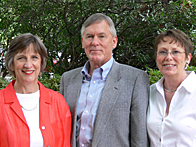 |
| Meredith, Denny, Paula |
But it didn’t just happen.
In fact, it seems that the kind of relationship we’ve built over the years is quite rare.
Recently I was talking with a friend who’d been burned by a new business partner. They’d started their company together, but just as positive momentum was building, the other guy decided to leave. No advance warning. No consideration for the impact his actions would have on my friend.
It got me to thinking how fortunate I am. The trust, mutual respect and love that Denny, Paula and I have developed over the years may not be unique, but it’s certainly not typical of business partnerships.
We’re each quite different, so we bring our own set of gifts and talents to the table. Over the years, we’ve come to appreciate and value these individual strengths. But for many, differences in style, approach and personality become sources of irritation…or worse.
It’s very easy to get annoyed, frustrated or even angry when the other person not only has a different point of view but openly opposes one of your ideas.
The three of us don’t always agree. In fact, we’ve had some very strong disagreements over the years.
But a key reason we’ve grown stronger as a team is because we’ve developed the communication skills to talk through those challenging moments.
Sometimes we have to remind each other to use the skills, but that’s OK. It’s part of the open, honest, direct approach to interacting that’s necessary to build relationships that last.
Which communication skills matter most for business partnerships to work?
These five are among the key skills we’ve applied on a regular basis with each other (as well as with other team members, our clients and our vendors). Denny and I used to teach these skills when we conducted training programs for our clients. We’ve spent a quarter of a century mastering them!
LISTENING
This is at the core of all other communication skills. Yet so few of us do it well. We’re eager to tell our own story, share our opinion or repeat a point we’ve already made.
Effective listening requires us to focus on what the other person is saying or not saying, pay attention to body language and other non-verbals, and make a concerted effort to “get” the message. It’s not easy, but it goes a long way towards building trust, commitment and mutual respect.
ENGAGING IN DIALOGUE
Are you willing to keep an open mind so you can understand the other person’s perspective? That’s what dialogue requires. We want to find out not just what they think about a topic or situation, but why they hold that opinion. And when both parties feel the freedom to do this, we learn from each other and often expand our own thinking.
GIVING CONSTRUCTIVE FEEDBACK
It’s not always easy to be direct with someone about behaviors that are causing you problems. But if you come from a position of caring, open-mindedness, and respect, you’re more likely to convey the facts in a non-judgmental manner that opens a conversation.
RECEIVING CONSTRUCTIVE FEEDBACK
And it’s natural to get defensive when you hear that you’re the one who’s created issues for others. Remember, it took courage for them to talk to you about your behavior. A calm, open attitude - where you invite them to tell you more - encourages a frank discussion about what’s happened and what you can do differently going forward.
RESOLVING CONFLICTS
When you and another person want opposing things – whether at home or at work – a serious conflict can arise. Now is the time to engage listening and creative thinking. Explore what each party wants or needs. Then brainstorm ways you can achieve those needs. Be willing to consider what would represent a “win” for everyone.
Now, these five skills don’t appear overnight. Just like a professional athlete, we have to PRACTICE often and have a COACH to encourage us and help us make corrections so we perform the skill better next time.
That’s what Denny, Paula and I have done with each other. And it’s worked for 25 years. Like a good marriage, we’ve gotten better with time.
Want to strengthen the important relationships in your business or personal life? And at the same time, support others who want to work on their own communication skills?
Check out this free series of 9 videos and an ebook that show you how.
If you'll apply what you learn in these resources, I can promise that you'll have a better experience when you interact with others.

